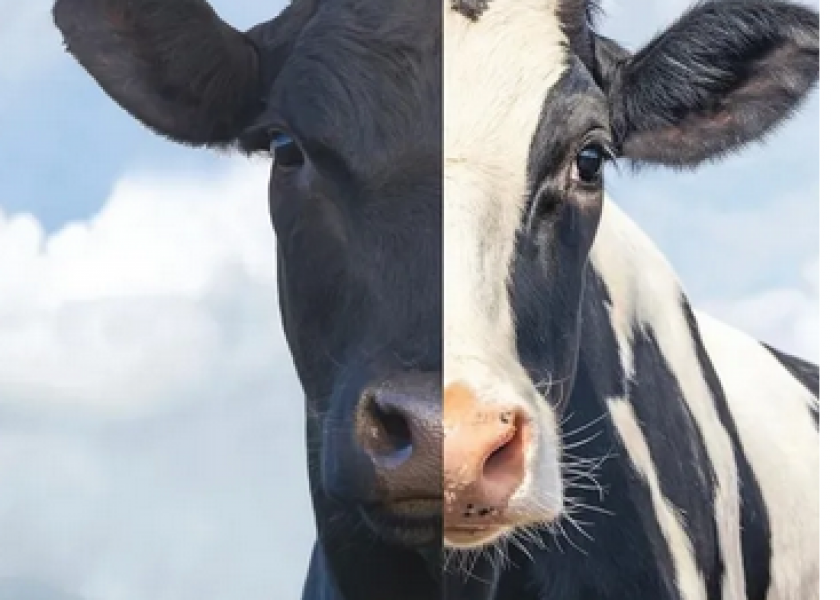Beef-Dairy Crosses Continue to Earn their Way

Are your dairy clients looking to capture a premium with beef-on-dairy cross calves and improve their farm’s bottom line?
A lot of producers are, according to industry reports. Numbers quoted by various industry leaders indicate between 2.5 million and 5 million beef-on-dairy cross calves will be born this year and again in 2023.
That estimate range is extrapolated from the total number of beef semen straws sold to dairy producers and reported by industry members (for instance, bit.ly/3GbEyA1), as well as the National Association of Animal Breeders.
Premiums for such calves often range between $50 to $175 more per head ($100 is common) than purebred Holstein bull calves, according to Justin Waggoner, Kansas State University Extension beef specialist. He spoke at the Beef Empire Days’ first Beef on Dairy Symposium last summer in Garden City, Kan.
Meet Marketplace Demands
Whether the trend for dairy-beef crosses continues to build long-term or fizzles in the future may depend on how well the dairy industry aligns its goals with the goals of the beef industry.
Early in the beef-dairy trend, “fertility was used to improve dairy breeding programs,” says Dan Altena, DVM, Valley Veterinarians, Inc., Tulare, Calif.
Dairy producers were primarily tuned into sire conception rates, semen cost, calving ease and (black) hair coat color – add University of Wisconsin agriculture educators, Amanda Cauffman and Ryan Sterry.
They say a better strategy is for dairy producers – with support and guidance from trusted advisers – to stack the odds of success in their favor by combining the traits they value along “with thoughtful beef sire selection that delivers an animal that better meets the feedlot segment’s priorities.”
Feedlot priorities include carcass value, carcass weight, feed efficiency, ribeye area, muscling, moderate frame score (Holsteins), increased carcass weight (Jerseys), and the use of homozygous polled bulls, note Cauffman and Sterry in a 2019 report. (See it at https://bit.ly/3Ar8MOm)
Along with addressing marketplace demands, take a look at your dairy clients' business goals and management practices, as well as how capable they are at adopting new practices. As with every opportunity, there is a corresponding set of risks, so beef-on-dairy isn't for everyone.
Genomics Are At Work
Altena says the dairy industry is making positive strides to increasingly deliver what the beef industry wants. He addressed the topic of beef-dairy crosses during the annual Academy of Veterinary Consultants conference in Kansas City this past December.
“Genomics are being used on many herds to identify outliers and reproduce the best animals,” he says. “Health traits are also being picked more often now as the industry matures.”
Altena adds the semen companies all have “special sires or programs, used in combination with sexed-semen-targeted matings” that dairymen can evaluate for how they line up with their specific production goals.
One mistake to avoid – buyers are increasingly discerning and know a black coat may simply be hiding a Holstein.
“Think specifically of the bull, not just the breed,” advises Denise Schwab, Extension beef specialist, Iowa State University. She says beef sires should be one strategic element of a herd’s total genetic plan, and not just “cow fresheners” for repeat-service dams.
Develop Standard Protocols
Cauffman and Sterry note that within-breed sire selection is important. “Limousin, Angus and Simmental all have homozygous black, polled bulls that can provide needed muscle shape and moderate frame size to add value to crossbred calves. Within-breed selection is highly important, regardless of the breed you choose,” they say.
Altena says veterinarians can help dairy producers add value to their crossbred calves – as well as establish ongoing marketing partners and potential buyers – by developing a set of protocols and records that can be readily shared with those groups.
The Wisconsin educators agree. They add that some feedlots offer contracts or purchase programs for crossbred calves, “if you use the genetics they select or provide and follow specific health protocols. These arrangements can result in a win-win for both dairy and beef producers.”
One caution from Cauffman and Sterry. They advise against retaining dairy-beef crossbreds as female brood cows for beef production. While the prospect of higher milk production is attractive, they say some dairy traits can persist for generations and might negatively affect feeder calf quality.







